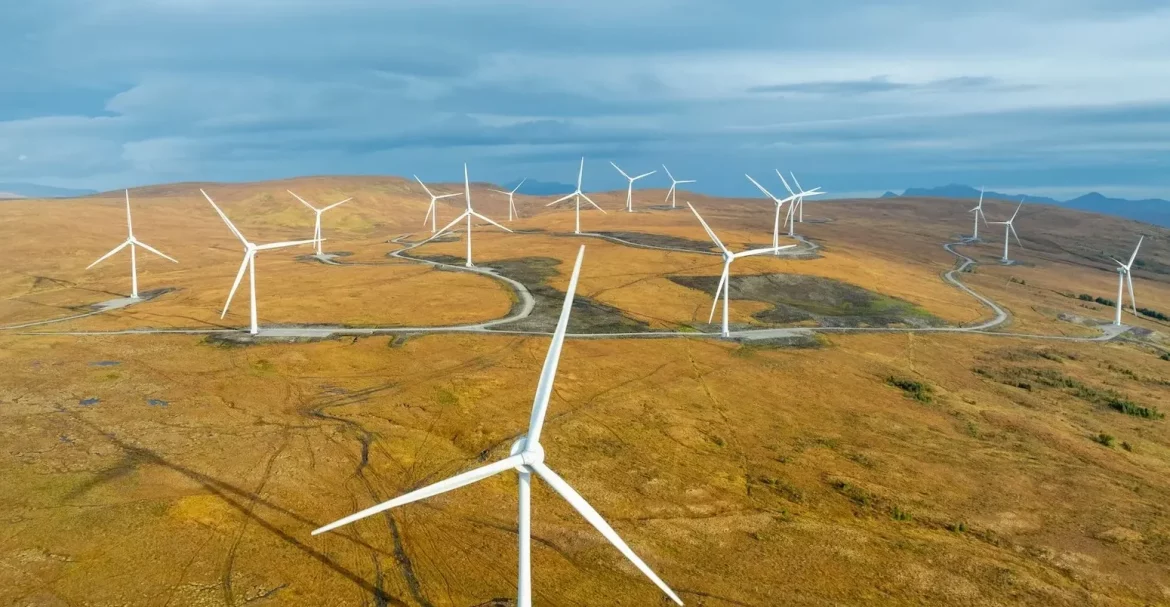A new study in Nature Climate Change has shown that extreme “wind droughts” that reduce power output from turbines for extended periods could become 15% longer by the end of the century across much of the northern hemisphere under a moderate warming scenario.
According to the study, which explores how climate change could impact the length and frequency of prolonged low-wind events around the world, “prominent” wind droughts have already been documented in Europe, the US, northeastern China, Japan and India.
As the planet warms, wind droughts will become longer in the northern hemisphere and mid-latitudes – especially across the US, northeastern China, Russia and much of Europe – the paper says.
The study, which among other things, focuses on onshore wind – warns that “prolonged” wind droughts could “threaten global wind power security”. However, they add that research into the effects of climate change on wind supply can help “prepare for and mitigate the adverse impacts” of these prolonged low-wind events.
Combining wind power with other energy technologies – such as solar, hydro, nuclear power and energy storage – can help reduce the impact of wind droughts on global energy supply, the study says.
One expert, who is not involved in the research was quoted as saying that the findings do not “spell doom for the wind industry”. Instead, he says the study is a “navigation tool” which could help the energy industry to “counteract” future challenges.
Wind drought
Wind power is one of the fastest-growing sources of energy in the world and currently makes up around 8% of global electricity supply. It is also playing a crucial role in the decarbonisation of many countries’ energy systems.
Wind is the result of air moving from areas of high pressure to areas of low pressure. These differences in air pressure are often due to the Earth’s surface being heated unevenly.
Read also: Kano govt unveils climate change policy, to plant 5m trees in 2025
Human-caused climate change is warming the planet’s atmosphere and oceans. However, different regions are heating at different rates, resulting in a shift in global wind patterns. The IPCC finds that global average wind speeds (excluding Australia) slowed down slightly over 1979-2018.
There have already been dozens of recorded instances of prolonged low-wind events, known as wind droughts, which can drive down power production from wind turbines.
Dr Iain Staffell is an associate professor at the Centre for Environmental Policy at Imperial College London who was not involved in the study. He tells Carbon Brief that wind droughts often “push up power prices” as countries turn to more expensive alternative energy supplies, such as fossil fuels.
For example, Staffell tells Carbon Brief that, in the winter of 2024-25, Germany saw an “extended cold-calm spell which sent power prices to record highs”. (In German, this type of weather event is referred to as a “dunkelflaute”, often translated as “dark doldrums”.) He adds:
“It’s important to note that I’m not aware of anywhere in the world that has suffered a blackout because of a wind drought.”
Capacity factor
The productivity of wind power sites is often measured by their “capacity factor” – the amount of electricity that is actually generated over a period of time, relative to the maximum amount that could have been generated in theory.
A capacity factor of one indicates that wind turbines are generating the maximum possible amount of electricity, while zero indicates that they are not producing any power.
The authors define a wind drought as the 20th percentile in each grid cell – in other words, winds ranking in the slowest bottom fifth of winds typically recorded in the region.
They look at the frequency of prolonged wind droughts and how that might change as the world warms.
The map below shows regions’ average capacity factor at 100 metres above the ground level, derived from the ERA5 reanalysis data over 1980-2022, where darker shading indicates a higher capacity factor.
It also shows 19 wind droughts recorded since the year 2000 across Europe, the US, northeastern China, Japan and India. Wind droughts are indicated by yellow triangles for local events and hashed areas for larger-scale events.
Story was adapted from Carbonbrief.
